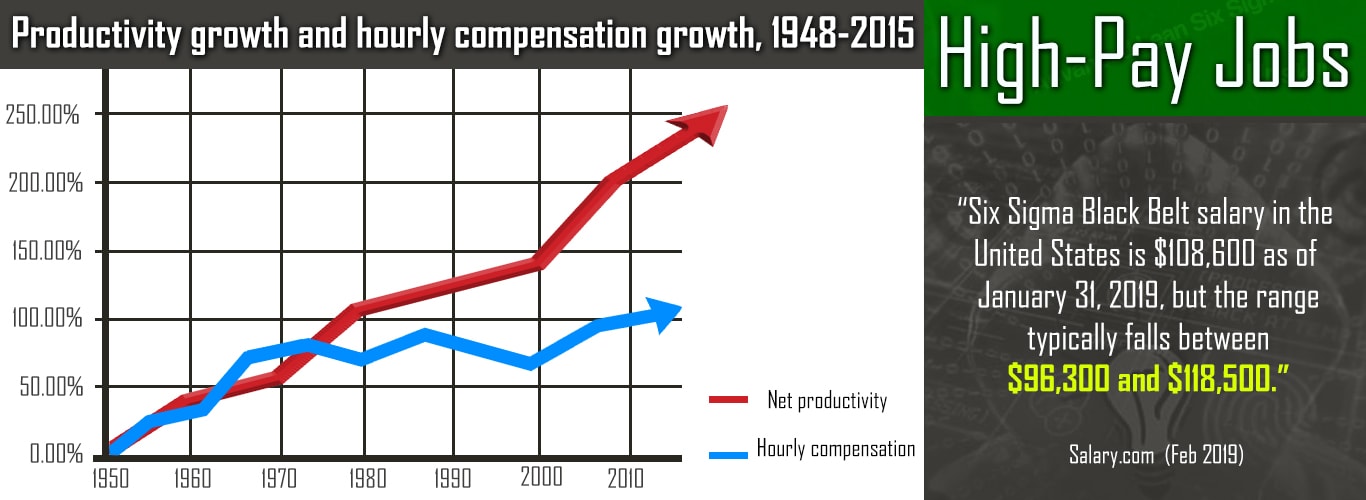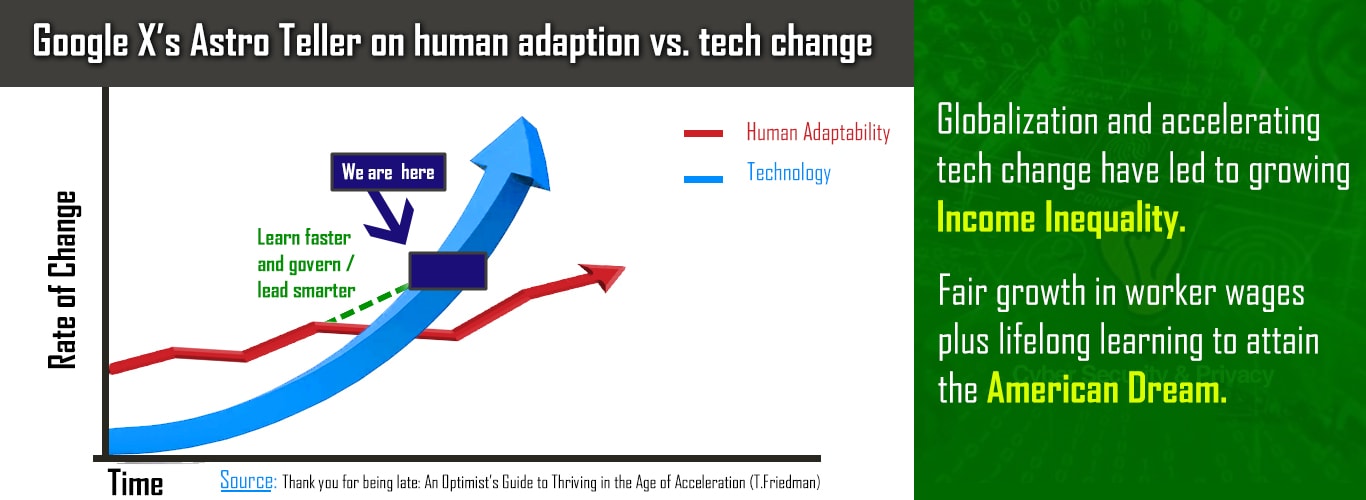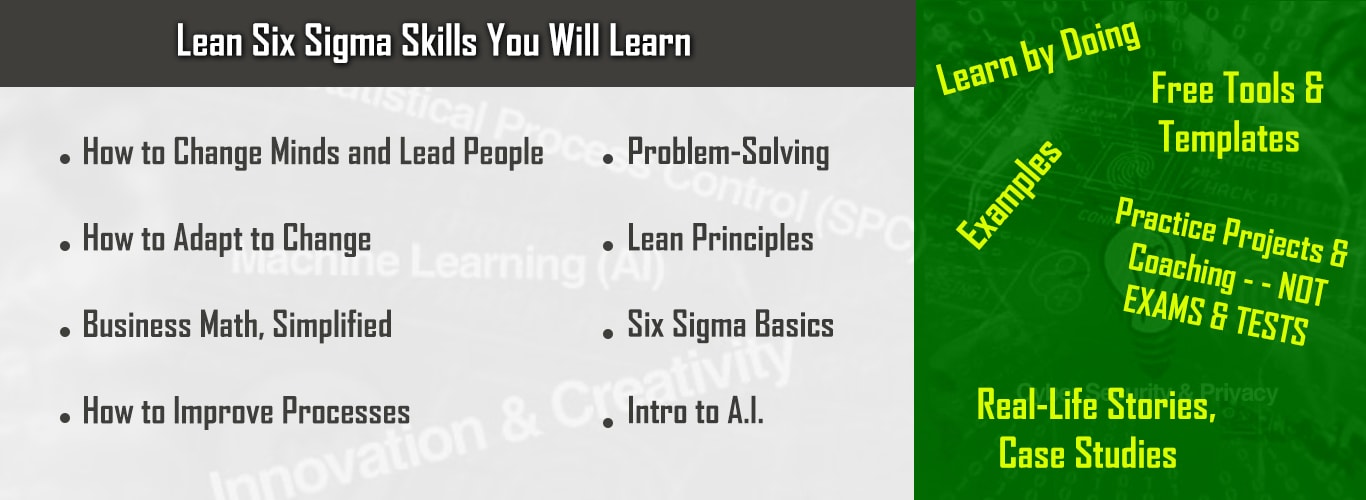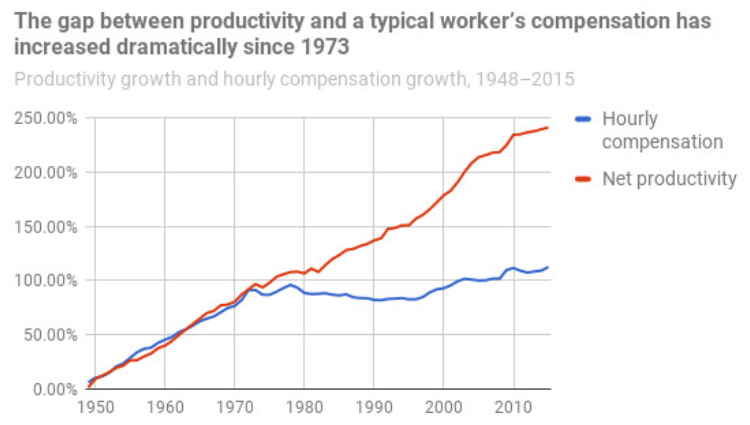Lean 6 Sigma OTG
(On The Go)

Lean Six Sigma Digital Transformation:
Learn More to Earn More
Free access to 30 years of real-world, hands-on Lean Six Sigma Digital Transformation experience: Training, Tools, Templates, Lessons Learned, Examples. Learn Creative Problem Solving and Innovation Methods. Overcome Resistance to Change, Upskill.
Adults learn best by doing. NOT by theory, academic classes and taking tests for a certification. Our approach is to show you what actually works in the real world, not to prep you for a certification exam.
Frank Shines’ Clients & Employers

Purpose
I’m Frank “Rio” Shines, a former US Air Force officer and IBM executive. Working with my mentee, Umer Qureshi, I have built this website to:
- Make Lean Six Sigma Digital Transformation and creative problem solving coaching & training affordable for everyone
- Honor Entrepreneurs who create wealth and opportunity and our US Military Veterans and NATO allies who protect it
Benefits
These ideas and tools are battle-tested and proven to work. They come from 30 years of hands-on experience working with some of the smartest people around the world. These skills can help you attract Lean Six Sigma Digital Transformation jobs with salaries of $100,000 to $300,000.
Overview of Website
I have placed these Lean Six Sigma and Digital Transformation methods in a specific order for a reason. Too frequently we jump to using tools without sufficient clarity about what problem(s) we are solving. Recall: “A problem well define is half solved.“ – Charles Kettering
Read more...
For this reason, we first talk about why Lean Six Sigma and Digital Transformation are vital to people and society at large: Middle Class Mobility (“The American Dream”) provides the underpinnings of a free market system and Democracy. But people need time and tools for adapting to change and access to the truth, not fake news.
Middle Class as Foundation of Democracy
First, we should understand that if the income / wealth gap continues to grow, we will lose most of our middle class and place the future of democracy itself at risk.
Lean Six Sigma Digital Transformation coaching and training can help reduce this skills gap and give workers high paying jobs. As of February 2019, Salary.com reports:
“Six Sigma Black Belt salary in the United States is $108,600 as of January 31, 2019, but the range typically falls between $96,300 and $118,500.”

Cannot Succeed without People, Who Need Time to Adapt
Second, we must appreciate the value, ingenuity and flexibility of human beings. Anyone who has actually tried to create and implement an AI algorithm or robot to mimic the intellect or dexterity of humans comes away with a much deeper appreciation of the value of people.
But people need time, support and tools to help them adapt to change.
Read more...
Shared Stats & Stories — Not Fake News
Third, if a society cannot generally agree to some commonly shared values and facts, it will perish.
Yuval Noah Harari, a Hebrew historian and best-selling author of Sapiens, Homo Deus and 21 Lessons for the 21st Century, chronicles the history of human beings. Large scale cooperation is the key to our advancement.
Harari found that certain human species became extinct
Click here to learn more
- Cooperate flexibly…
- …In very large numbers
Lean Six Sigma continuous improvement and Digital Transformation innovation methods are founded on science, data, facts, evidence and shared principles. If we cannot agree to baseline facts, we cannot apply the scientific method that helps us to improve our people and our organizations.

From 5S to AI-Powered Digital Transformation
The remaining sections are ordered in a logical manner, with the former section providing a foundation for the next step – like building blocks.
Incremental change and the build-up of habits and discipline start with 5S (organizational cleanliness and orderliness). From their we draw upon simple Lean tools and principles before advancing to data-intensive Six Sigma methods. Finally, we combine Lean Six Sigma (redesigning processes) and supercharge physical or manual processes with automation, AI machine learning and deep learning to attain Digital Transformation.
Reduce Income Inequality
Reduce Income Inequality & Wealth Gap
About 80 percent of US workers have suffered from flat real wage growth since the mid 1970s. Worse, yet upward mobility (the ability to rise to a higher level of income) has been falling since 1940 in the USA.
According to Prof. Raj Chetty, one of the leading bi-partisan authorities on income inequality, most Americans born in 1940 ended up better off than their parents at the same age. But for those born in 1980, “only half have surpassed their parent’s family income.”
Lean Six Sigma & Digital Transformation skills, which include Creativity, Problem Solving, Data Analytics and AI Machine Learning competencies, can help to reduce income inequality and close the wealth gap.

Overcome Resistance to Change
Tech Change with a Human Touch
In a world of accelerating technological change, there is no proven playbook for success. We have never done this before. Everything is in flux. So each of us will have to adapt and learn along the way.
However, the greatest learning takes place under conditions of ambiguity and risk. For this reason, Curiosity and Agility trump Caution and Rigidity. Leaders of Lean Six Sigma continuous improvement and disruptive Digital Transformation initiatives must help people, teams and organizations embrace curiosity and adapt to change.
Data & Evidence vs. Fake News
Millions of people are being psychologically “hacked” by social media’s fake news. Most do not understand they are being manipulated. In the military, we called this “PSYOP” – psychological operations.
Today, AI-powered online bots and algorithms amplify and accelerate the negative effects of PSYOP used domestically or by foreign actors. If left unchecked, this may ultimately threaten democracy and free market systems around the world.
https://youtu.be/BIv9054dBBI
5S & Intro to Lean
- Sort
- Set In Order (Straighten)
- Shine
- Standardize
- Sustain
First. we sort out things not needed to perform the work in our immediate work area. This reduces clutter, opportunity for errors and potential safety issues. Frees up space to lay out work in a flow.
Second, we set things in order — a place for everything and everything in its place (trays, bins, folders, shadow boxes, colored tape floor marking, etc.).
Third, we keep things shined, swept, dusted. Clean up!
Fourth, we standardize how we do work. This creates “flow” so that work is more organized and makes it easier for people to do their jobs and for others to learn (Examples: standard work, leader standard work, SOPs). The standards provide us a baseline upon which we can make improvements.
Finally, we sustain these 4 S’s through the discipline of daily management, self-policing and by providing rewards and consequences to encourage adherence.
Start with Baby Steps
- Walk the workplace at the beginning of the day with your staff
- Ask the team to identify examples of 5S opportunities
- Keep a list and follow up the next day to see improvements are being made
- Take 5-10 minutes before lunch and at the end of the day to Sort, Set, Shine
https://www.youtube.com/watch?v=MGW0JvUAmho
5S & Learn to See FTQ
https://www.youtube.com/watch?v=BWAYcEHGTrg
Intro to Six Sigma
https://www.youtube.com/watch?v=Kz_7njsDUMQ
A3 / 8D Problem Solving Tools
The Eight Disciplines of Problem Solving (8D) is a problem solving methodology designed to find the root cause of a problem, devise a short-term fix and implement a long-term solution to prevent recurring problems.
https://www.youtube.com/watch?v=o8sgcUZCSp8
Statistical Process Control (SPC)
When quality and productivity are high, there is less inspection and rework, which lowers costs. Lower costs can be passed on as savings to customers in order to grow market share. Lower prices help to raise the standard of living for society.
https://www.youtube.com/watch?v=Sdj-8ZBYYmo
Advanced Lean Six Sigma
https://www.youtube.com/watch?v=KcVR_eqwlMY
Machine Learning (AI)
AI has taken of because we now have lots more data, lower storage costs and lower computing costs. AI is about reducing the cost of prediction for better decision making.
We will dive deeper into AI (machine learning, deep learning, neural networks) and understand the difference between supervised learning, unsupervised learning and reinforcement learning).
https://www.youtube.com/watch?v=VUrqddjkxok
Innovation
https://www.youtube.com/watch?v=weIQIthC3Ks
Digital Transformation
“Extreme Lean”
Consider a simple example of how Lean can lead to digital transformation. Let’s suppose we are looking at how to use Lean to reduce the waste (DOTWIMPI) associated with your drive to work each day. Traditional Lean would note wasted time spent stopping for a light or stuck in traffic or time lost making a wrong turn, then seek a way to minimize this waste.
But Digital Transformation would realize 95% of your car’s time is spent parked — that’s 95% waste. This Extreme Lean assessment would lead us to an alternative pursuit such as Lyft or Uber as ways to reinvent the way we think about transportation by leveraging emerging technology.
https://www.youtube.com/watch?v=6-1qBowyZ_Q
